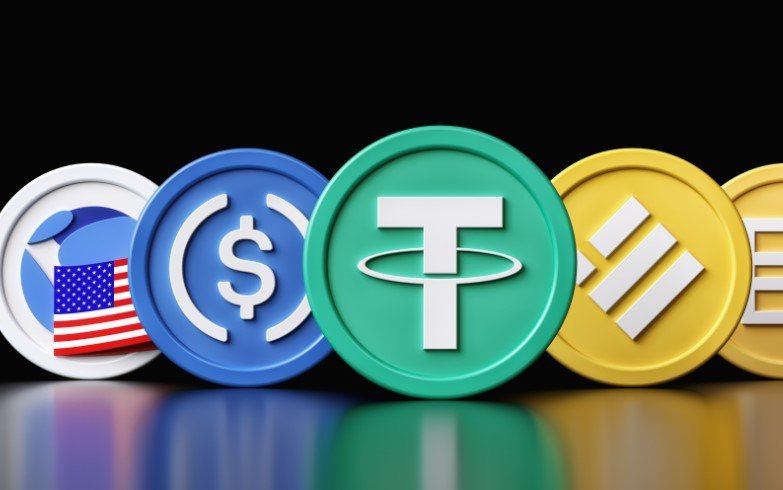Coinbase leaders stated on October 30, 2025, that fears about stablecoins pulling money from US banks miss the bigger picture of global use. The crypto exchange argues most stablecoin demand comes from outside the US, boosting the dollar’s worldwide role without harming local banks.
Banking Groups Raise Alarms on Stablecoin Yields
US banking groups have pushed Congress to limit yields on stablecoins, claiming they could draw customers away from traditional accounts and cause outflows. These groups worry that attractive returns on stablecoins might weaken bank lending power and hurt the overall financial system.
Coinbase researchers counter this view in a recent market note, calling it out of touch with how stablecoins work in practice. They point out that stablecoins often serve as tools for quick, low-cost transfers in places where banking is limited or unstable.

The debate heated up as stablecoin market value hit over $170 billion this year, with major players like USDT and USDC leading the pack. Banking lobbies argue this growth threatens deposits, but Coinbase says the real story lies in international adoption.
Experts note that stablecoins have grown popular in emerging economies for hedging against inflation and enabling cross-border payments. This trend shows up in data from blockchain analytics, where transfers spike in regions like Latin America and Southeast Asia.
Global Demand Fuels Stablecoin Rise
Most stablecoin users are not US residents shifting from bank accounts, according to Coinbase. Instead, people in developing countries turn to these digital dollars to protect savings from local currency swings.
For example, in countries with high inflation, stablecoins offer a stable store of value tied to the US dollar. This has led to a surge in adoption, with daily transaction volumes reaching billions.
Coinbase highlights that about two-thirds of stablecoin activity happens on decentralized platforms, separate from traditional banking. This setup acts like new plumbing for global finance, not a direct rival to US banks.
Recent partnerships, such as a major bank teaming up with Coinbase to test stablecoin payments, show how the industry is blending crypto with established systems. These moves aim to speed up international transfers and cut costs.
- Stablecoins enable instant, low-fee remittances for migrant workers.
- They support decentralized finance apps, where users earn yields without banks.
- In unbanked areas, they provide access to dollar-based savings.
Strengthening Dollar Dominance Worldwide
Coinbase argues stablecoins actually help the US dollar stay king in global finance. By making dollars easy to hold and move digitally, they expand US influence in places where cash or local banks fall short.
Policy chief Faryar Shirzad noted that treating stablecoins as threats ignores their role in spreading dollar use. He compared worries to past fears about money market funds, which ended up pushing banks to innovate.
Data from economic think tanks shows stablecoins boosting demand for short-term US Treasuries, as issuers back tokens with these assets. This could add trillions to Treasury markets over the next decade, per recent reports.
Even if stablecoin supply grows to $5 trillion, Coinbase says most would stay abroad or in digital systems, not drain US deposits. This view aligns with studies on how crypto aids financial inclusion without disrupting core banking.
Community Banks Face Little Overlap
Concerns that small US banks will suffer from stablecoin competition lack evidence, Coinbase claims. Typical stablecoin holders differ from community bank customers, often being tech-savvy or based overseas.
Shirzad suggested banks could even benefit by adding stablecoin services to attract new clients. This might include faster payments or yields on deposits, helping them compete in a digital world.
Community banks hold trillions in reserves, providing ample liquidity for lending. Stablecoins, being fully reserved, avoid the risks of fractional banking and focus on efficient transactions.
| Aspect | Traditional Banks | Stablecoins |
|---|---|---|
| User Base | Mostly domestic, everyday savers | Global, often in emerging markets |
| Transaction Speed | Days for international transfers | Near-instant |
| Yield Potential | Low interest on deposits | Variable, often higher via DeFi |
| Risk Profile | Fractional reserves | Fully backed reserves |
| Global Reach | Limited by regulations | Borderless access |
Future Outlook and Regulatory Paths
Looking ahead, Coinbase urges lawmakers to embrace stablecoins through clear rules, like proposed bills that ensure transparency and audits. This could unlock innovation while protecting users.
As crypto regulation evolves, stablecoins might integrate more with banking, as seen in pilots for tokenized assets. Economic forecasts predict continued growth, driven by demand for efficient global payments.
The key is balancing innovation with stability, experts say. With banks adapting to digital trends, stablecoins could complement rather than replace traditional services.
What do you think about stablecoins’ role in finance? Share your views in the comments and spread this article to join the conversation.








